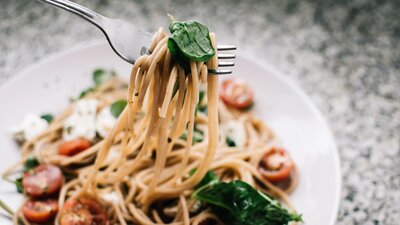Carbohydrates are a staple in bodybuilding. They can factor into physical performance, stress, and sleep. The body will determine its needs through inflammation and immune function. If the goal is muscle gain, look no further than this food group. With so many different types of carbs, which ones best support this anabolic goal? Resistant starches can improve muscle protein synthesis (MPS) because of its effect on blood glucose.
Why Starches?
For context, the skeletal muscle organ is the largest in the body, containing almost half of the average body’s weight. It requires the most energy to keep running, taking on over 80% of the body’s glucose uptake. Muscles interact with glucose more than any other organ.
The skeletal muscle has a nutrient sensor called O-GlcNAc that increases insulin expression. Exercise induces therapeutics against metabolic diseases and insulin resistance (1). How do resistant starches play into this?
Resistant starches are the most malleable for muscle protein synthesis because of their impact on blood glucose. The glycemic index (GI) measures the rise in blood glucose initiated by carbohydrates. High-GI foods are carbs with either low fiber and/or high sugar content. Low-GI carbs contain more fiber and take longer to digest.
Starches can be manipulated to be slow or fast carbs based on their preparation method. The heating, cooling, and reheating of these foods can change their placement on the GI. The cooler the food, the lower its GI level.
A starch can actually increase its GI level by reheating after cooling. A reheated potato was proven to have a higher GI level than after its first initial heating process (2). This study tested GI levels in potatoes, rice, and pasta. Potatoes were the most prevalent out of the three. After a workout, protein paired with high-GI carbs can speed up muscle protein synthesis. Potatoes can assist with the MPS by speeding up the digesting of the protein.
Starch vs. Fruit
If MPS is desired to be sped up, why not choose to pair it with fruit? Fruit intake and muscle gain have had an inconsistent correlation. It varies between the type of training, intake protocol, and gender of an athlete. Besides that, antioxidant foods are still a reliable source for disease prevention.
Antioxidants can relieve free radicals that cause muscle damage and fatigue. It comes down to the type of antioxidants absorbed. Endogenous antioxidants are proteins produced by the body, while exogenous antioxidants come from the vitamins of fruits and vegetables. Endogenous antioxidants are more fit to defend the body from free radicals. Exogenous antioxidants are on the second line of defense.
As for building muscle, it may not produce the benefits that would happen for other athletes. It’s the most supportive for altitude and HIIT athletes because it will support their VO2 max. Vitamin C, a prominent vitamin in fruits, prevents the presence of antioxidant enzymes in the skeletal muscle (3). Alongside that, it can block anabolic signaling pathways necessary for resistance training. While fruit is a great source of natural sugar and dietary fiber, it should be eaten in moderation rather than the main source of carbs.
Starch vs. Grains
Grains are mostly starch, but contain more fiber and protein than potatoes and pasta.
Oats are the most common form of grains, given their high resistant starch content. While heating or cooling, their gelatinization can dictate their GI levels. Heating it will increase it and cooling will have an adverse effect.
The density of grains holds back their potential for maximum MPS. Oats contain certain lipids that enzymes cannot break down. This can make it one of the slower-digested carbs on the GI, alongside legumes. One way around this is the gelatinization process. When cooking oats, they will form crystals and gel from the heat. These will assist in digesting the lipids (4).
When it comes to their GI levels, they experience a similar effect as the potatoes. They will get lower on the scale when cooled and higher than ever once reheated. This range happens lower on the scale than potatoes. Grains can be a very good source of carbs for muscle gain, but their GI levels put them second to starches.
Start with Starch
Resistant starches improve MPS, glucose metabolism, and gut health. Each type of carbohydrates contributes different benefits to diet and health. For muscle gain, there is a time and place for each one. However, knowing which one will benefit muscle hypertrophy can improve performance and recovery. It all comes down to the timing of each one.
Works Cited

